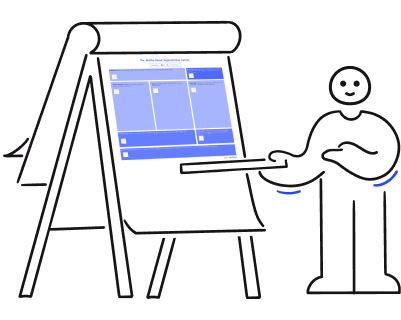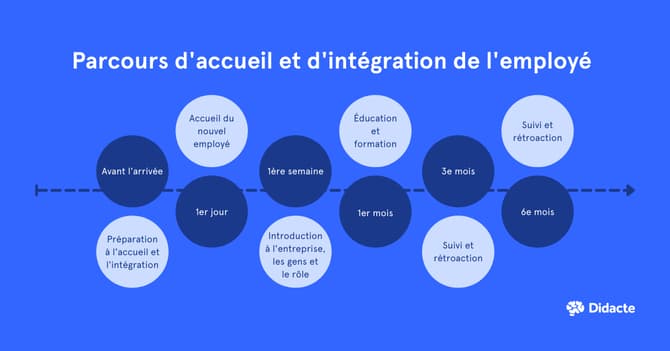It’s rare that a new employee can simply plug into a new role and hit the ground running. We all know this.
Unfortunately, many leaders pay lip service to the concept of learning curves and the time it takes to ramp. Hungry for results, they take the fastest path possible to get those new hires in chairs and in front of shiny new laptops.
A learning curve is the relationship between a new employee's mastery of their responsibilities and the time it takes them to do so. It includes the employee's ability to perform a specific task, but also their broader understanding of the impact of their work on the company.
The problem is, speed often comes at the cost of quality work. As a result, your new talents never develop a deep understanding of what your company does and what their role entails.
This typically backfires on a manager. Each new hire ends up spending more time asking questions and inevitably takes more time to ramp up to their full performance potential.
With this in mind, what is the best approach to improving the learning curve of your newly hired employees?
Let’s explore 5 initiatives you can implement for new hires.
Empower your organization with the skills-based canvas.

What's in this article
1. Block out the first week (or more) for onboarding
Give your new employees a bit of time to get accustomed to the company, the office, and their new coworkers.
Rather than throwing them in the deep end, it’s wise to block out at least their first week for training and onboarding. You might even need 2 weeks, depending on the role.
Blocking time is especially important for roles with performance, such as a sales rep. Expecting your new representative to contribute toward a high target in their first month on the job will inevitably lead to disappointment.
Additionally, make sure to block out time on your calendar for their onboarding. That is, of course, assuming you’re the one performing new employee training.
If you are, it’s essential to make it clear to the rest of your team that this training time will be dedicated to new employees. Therefore, you won’t be able to attend other meetings.
2. Use a centralized learning platform
You don’t always need to be sitting next to your new employees.
An efficient way to enable their onboarding to continue without you is to use an educational platform or learning management system (LMS).
Companies can use these tools to improve the learning curve for employees by splitting training between in-person and online, where appropriate.
Most often, your LMS will be used for pieces of training related to the company itself (values, mission, etc.) or fundamental skills.
Going online will help your employee find their learning rhythm and make the one-on-one time together more focused on specific tasks.
3. Start coaching using real-life situations
The learning curve of your new employees does not start and stop with the onboarding process.
Remember, the end of the onboarding process is not the end of their learning process. Therefore, your onboarding should include more than just formal training. It also needs a good deal of coaching using real-life situations.
For example, an inside sales agent’s training and onboarding might include:
- Product-related education
- Creating optimized content for the team
- Company policies and procedures
- Sales process, pricing analysis
- Lead outreach courses
- Role-play scenarios
- Listening to calls performed by existing reps
- Making actual phone calls to real clients
- Reviewing their calls and engaging in further coaching with managers
Note how the last 3 activities involve real-life scenarios.
These get your new employee into the action. It means that when you let them loose on the phone, they’ll have some relevant, real-life experience under their belt.
4. Focus on improving soft skills like communication
Soft skills such as communication are crucial in today’s work environment, particularly as recent changes have opened up a massive opportunity for employees in remote work.
It’s now easier than ever to hire and onboard employees from anywhere in the world, making communication skills even more critical.
For this reason alone, you should consider including some soft skills training as part of your onboarding process.
For example, if you’re hiring team members who speak English as a second language, you could consider investing in a business English course.
Or, depending on the needs and priorities of your company, you could include training on soft skills such as:
- Problem-solving
- Leadership
- Critical thinking
- Intercultural fluency
- Teamwork
5. Allow new hires to spend time in each area of the business
When it comes to employee hiring and training, one of the best things you can do to improve the learning curve of your new employees is to allow them to spend some time observing each facet of your business.
This might mean it takes a little longer to get into the action of their role, but it also ensures they have a deeper understanding of the entire operations of your organization.
For example, operations staff will have a more vital understanding of how the sales process works, and sales reps will understand how their actions impact the admin team.
You should extend this to roles within the same department.
For example, a typical inside sales team is made up of:
- Sales development reps
- Account executives
- Customer success agents
A new account executive will have a much firmer grasp of how their role impacts the business as a whole if they can spend time seeing what other departments do.
Conclusion
Improving the learning curve of your employees is a win-win-win situation.
It gets them up to speed more quickly, so they can deliver what they were hired to do. This, in turn, leaves them feeling good about the decision they made to work with you.
It also makes your job easier as a manager, as you’ll be spending less time thinking to yourself: “shouldn’t they know this already?”
And, of course, it has a significant positive impact on business goals, allowing you to grow quickly and get back to hiring.
Let’s recap the 5 strategies we discussed:
- Block out the first week (or more) for onboarding
- Use a centralized learning platform
- Start coaching using real-life situations
- Improve soft skills like communication
- Allow new hires to spend time in each area of the business
Feeling inspired and ready to develop a new onboarding process?
Get the most out of your employees with Workleap's learning management system!
Discover, manage, and grow your team’s skills to unleash their potential and retain your rising stars.




